100 Things to Do and See in Germany
“Germany is a large country with a long and fascinating history, full of testimonies to art and culture, of the past and present, and with a wealth of landscapes that is second to none: the Baltic Sea and the North Sea with their long beaches, dreamlike Hanseatic architecture, large and small islands and a Wadden Sea invite you to enjoy the best recreation and leisure activities. To the south, the Mecklenburgische Seenplatte lake district is a fantastic and still very much unspoiled recreational paradise, perfect for hiking, cycling and water sports of all kinds.
Wonderful landscapes with a well-balanced mix of wide plains, dense forests, gentle hills, streams and rivers, large and small lakes. The hills become the German Mittelgebirge low mountain ranges, each with its own special charm: the Harz Mountains, the Rhön Mountains, the Ore Mountains and the Thuringian Forest. The Alps rise up in the very south of Germany inviting you enjoy trekking and winter sports and to drink in the clear and healthy air.
In between all these regions are large and small towns, sleepy villages and pulsating cities. Even if the following hundred best highlights form your travel compass, you still won’t come anywhere close to experiencing all the beauty Germany has to offer with all its facets. But it makes a great start! Read on to find the best things to do on a holiday to Germany.
100 Things to Do and See in Germany
===================================
1. An art island right in the middle of the River Spree
——————————————————-
 The Museum Island in Berlin’s historic centre is an ensemble you won’t find anywhere else in the world and is therefore one of the most important museum complexes in Europe. The Altes Museum (old museum), the Neues Museum (new museum), the Alte Nationalgalerie (old national gallery), the Bode Museum and the Pergamon Museum were built between 1830 and 1930, designed by renowned architects and have been UNESCO World Heritage Sites since 1999.
The Museum Island in Berlin’s historic centre is an ensemble you won’t find anywhere else in the world and is therefore one of the most important museum complexes in Europe. The Altes Museum (old museum), the Neues Museum (new museum), the Alte Nationalgalerie (old national gallery), the Bode Museum and the Pergamon Museum were built between 1830 and 1930, designed by renowned architects and have been UNESCO World Heritage Sites since 1999.
2. The beauty of Lake Constance: botanical garden and palace gardens on Mainau Island
————————————————————————————-
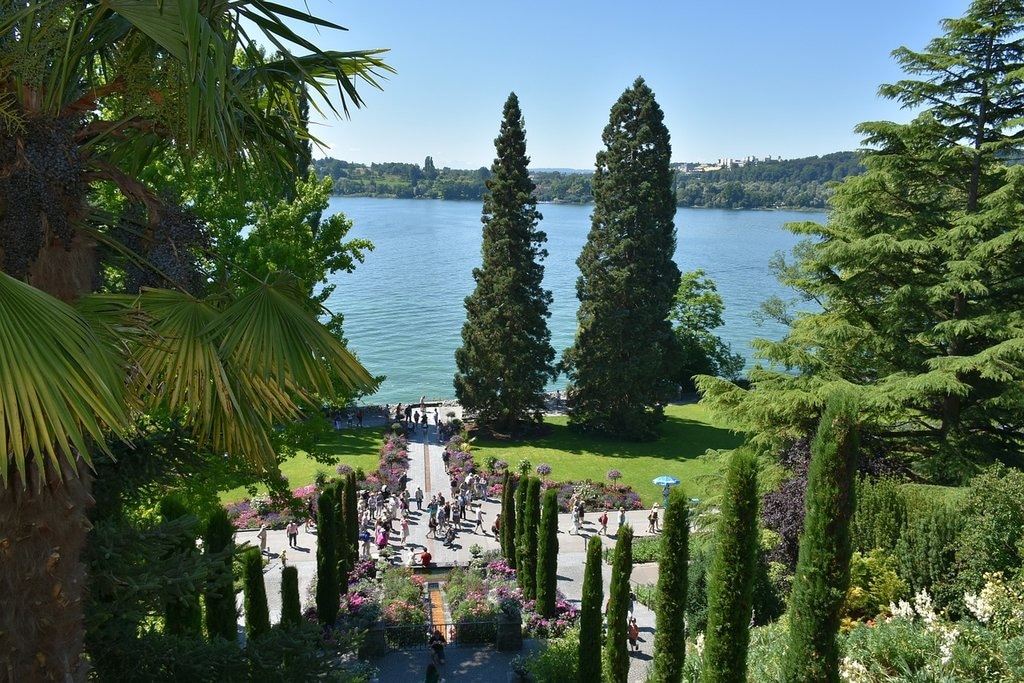 The park and garden complex provides visitors with the most beautiful natural surroundings throughout the year – with its baroque palace, a tree collection over 150 years old, one of the largest butterfly houses in Germany, a variety of show gardens and a romantic rose garden. The Mainau Kinderland kids world with its “Blumi’s Lakeside World” and mini village make Mainau a paradise for children too. And it’s family-friendly: under-twelves go for free.
The park and garden complex provides visitors with the most beautiful natural surroundings throughout the year – with its baroque palace, a tree collection over 150 years old, one of the largest butterfly houses in Germany, a variety of show gardens and a romantic rose garden. The Mainau Kinderland kids world with its “Blumi’s Lakeside World” and mini village make Mainau a paradise for children too. And it’s family-friendly: under-twelves go for free.
3. A monument to tolerance and peace: the Frauenkirche church in Dresdenn
————————————————————————-
 Since the renovated Frauenkirche was consecrated in 2005, it has become the biggest tourist attraction in Saxony’s capital. Located in the heart of the old town, this monumental Protestant church is once again the landmark of the city, as it was until its destruction in February 1945. The surrounding baroque gabled houses were also not reconstructed for as long as the ruin symbolically dominated the Neumarkt area. Since then, the entire Neumarkt has been reconstructed and Dresden has its old city centre back again.
Since the renovated Frauenkirche was consecrated in 2005, it has become the biggest tourist attraction in Saxony’s capital. Located in the heart of the old town, this monumental Protestant church is once again the landmark of the city, as it was until its destruction in February 1945. The surrounding baroque gabled houses were also not reconstructed for as long as the ruin symbolically dominated the Neumarkt area. Since then, the entire Neumarkt has been reconstructed and Dresden has its old city centre back again.
4. Royal flair in the Allgäu region: Neuschwanstein Castle
———————————————————-
 Neuschwanstein Castle is the perfect inspiration for your dreams. Every year, over 1.5 million tourists from all over the world cannot resist its pull and besiege this fairytale castle. Building started from 1869 under the Bavarian King Ludwig II as a medieval knight’s castle in the foothills of the Alps. The fact that only fifteen of the planned two hundred rooms were ever completed hardly diminishes peoples’ enthusiasm. There is still one bedroom in neo-Gothic style, a living room with original furniture and the richly decorated throne room to visit. Capacity is limited, so it is best to book tickets online. And what could top off your beautifully romantic visit better than a room in a hotel near Neuschwanstein Castle.
Neuschwanstein Castle is the perfect inspiration for your dreams. Every year, over 1.5 million tourists from all over the world cannot resist its pull and besiege this fairytale castle. Building started from 1869 under the Bavarian King Ludwig II as a medieval knight’s castle in the foothills of the Alps. The fact that only fifteen of the planned two hundred rooms were ever completed hardly diminishes peoples’ enthusiasm. There is still one bedroom in neo-Gothic style, a living room with original furniture and the richly decorated throne room to visit. Capacity is limited, so it is best to book tickets online. And what could top off your beautifully romantic visit better than a room in a hotel near Neuschwanstein Castle.
5. Leaving its mark throughout the country: Bauhaus Art
——————————————————-
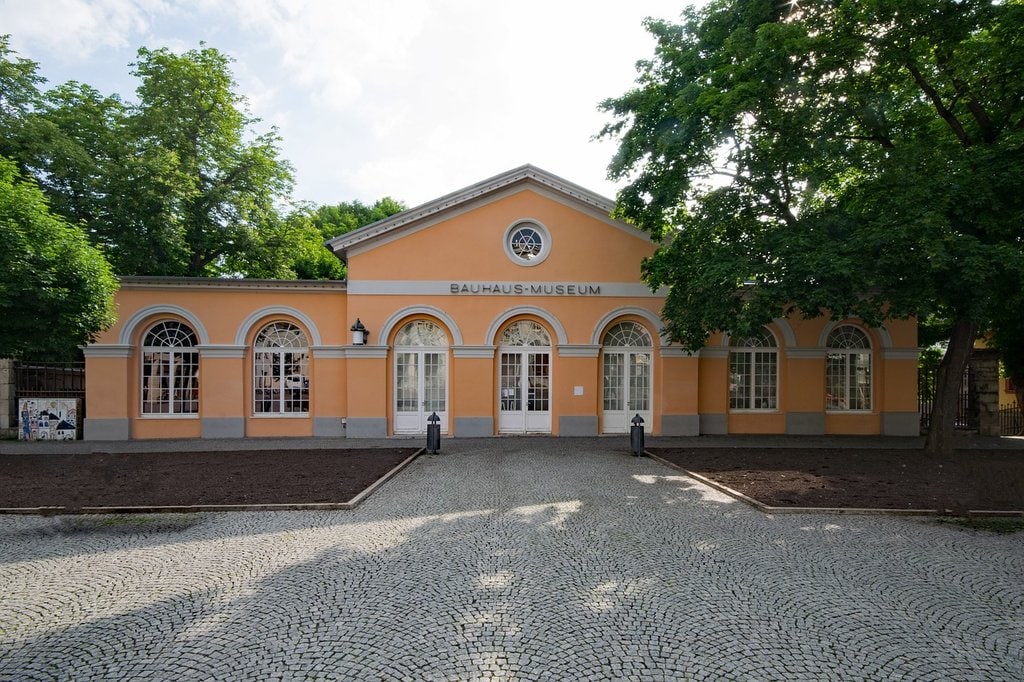 The Bauhaus movement, founded in Weimar in 1919, left its mark almost everywhere in Germany. Particularly so in Weimar and Dessau, where Walter Gropius, Lyonel Feininger, Gerhard Marcks, Paul Klee, Oskar Schlemmer and Wassily Kandinsky taught at the design and art schools. Evidence of this art and the architecture it influenced can be found in Brandenburg as well as in Baden-Württemberg. Bauhaus fans and novices alike can get a good overview at the Bauhaus Museum Weimar, opened to mark its centenary and with treasures from the world’s oldest Bauhaus collection.
The Bauhaus movement, founded in Weimar in 1919, left its mark almost everywhere in Germany. Particularly so in Weimar and Dessau, where Walter Gropius, Lyonel Feininger, Gerhard Marcks, Paul Klee, Oskar Schlemmer and Wassily Kandinsky taught at the design and art schools. Evidence of this art and the architecture it influenced can be found in Brandenburg as well as in Baden-Württemberg. Bauhaus fans and novices alike can get a good overview at the Bauhaus Museum Weimar, opened to mark its centenary and with treasures from the world’s oldest Bauhaus collection.
6. The splendour of bygone times: Sanssouci Palace in the Brandenburg capital of Potsdam
—————————————————————————————-
 Frederick II had his Sanssouci summer residence built from 1745. There he debated with Voltaire in philosophical discussions, played the flute and enjoyed his walks through the gardens and wine terraces. Today there are five castles and 76 kilometres of paths in the park, which is now a UNESCO World Heritage Site. The walk from Sanssouci Palace to the New Palace alone gives an idea of how huge the whole park is. The best way to discover Potsdam’s treasures is on an all-day guided tour.
Frederick II had his Sanssouci summer residence built from 1745. There he debated with Voltaire in philosophical discussions, played the flute and enjoyed his walks through the gardens and wine terraces. Today there are five castles and 76 kilometres of paths in the park, which is now a UNESCO World Heritage Site. The walk from Sanssouci Palace to the New Palace alone gives an idea of how huge the whole park is. The best way to discover Potsdam’s treasures is on an all-day guided tour.
7. Pure German romanticism: Heidelberg Castle
———————————————
 In the 13th century it was “just” a residence in the form of a fortified medieval castle for the Count Palatines and later Prince-Electors of Heidelberg. Over the centuries, however, it has become a representative palace, one of Germany’s most important cultural monuments with its Renaissance palaces and palace gardens. And all this despite the fact that only a romantic ruin from old times now remains to be seen, in which only the Friedrich Building was completed and restored in true historic style!
In the 13th century it was “just” a residence in the form of a fortified medieval castle for the Count Palatines and later Prince-Electors of Heidelberg. Over the centuries, however, it has become a representative palace, one of Germany’s most important cultural monuments with its Renaissance palaces and palace gardens. And all this despite the fact that only a romantic ruin from old times now remains to be seen, in which only the Friedrich Building was completed and restored in true historic style!
8. A great viewing station: the Berlin Reichstag
————————————————
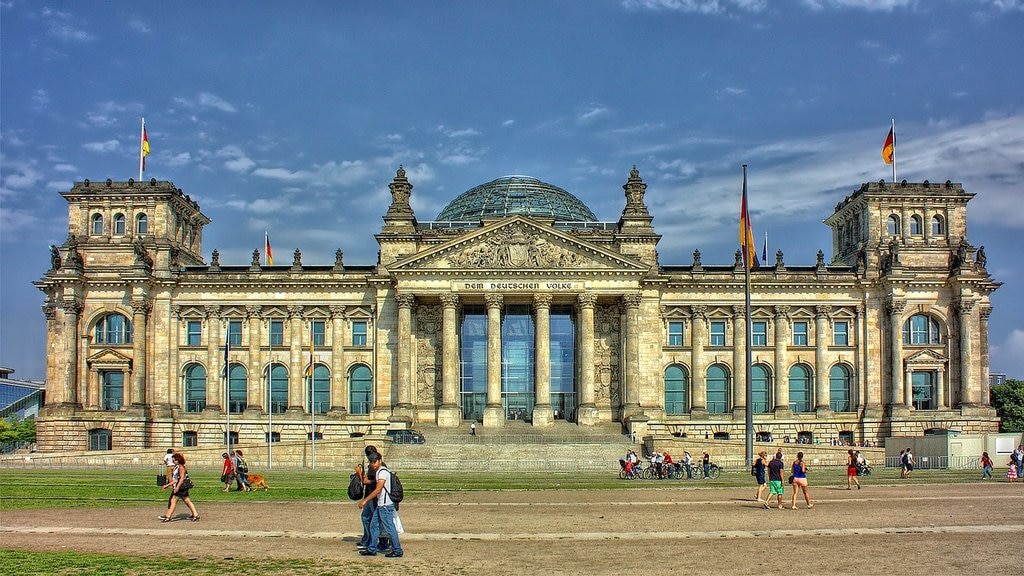 The Berlin Reichstag building, seat of the German Bundestag, is without doubt one of the most popular and most visited sights in the capital. Not only because it is known as a venerable building, full of history, but also because there is an amazing walkway going up through the retrofitted glass dome on the roof. The spacious terrace and the roof garden restaurant give a wonderful panoramic view over the Tiergarten parkland, the government quarter, the riverboats of the Spree and so much more.
The Berlin Reichstag building, seat of the German Bundestag, is without doubt one of the most popular and most visited sights in the capital. Not only because it is known as a venerable building, full of history, but also because there is an amazing walkway going up through the retrofitted glass dome on the roof. The spacious terrace and the roof garden restaurant give a wonderful panoramic view over the Tiergarten parkland, the government quarter, the riverboats of the Spree and so much more.
9. On a par with the Cannes and Venice Film Festivals: the Berlinale
——————————————————————–
 Image sources: Siebbi via Flickr
Image sources: Siebbi via Flickr
Every year since 1951, Berlin has been rolling out its red carpet ready for the biggest names and lesser starlets to walk. They’re mostly freezing though, because the Berlin International Film Festival has been taking place in February since 1978. The highlight is the award of the Golden Bear and a number of Silver Bears in varying categories. The jury, which is always made up of prominent members, awards the Jury’s Grand Prize.
10. Germany’s highest waterfalls: natural spectacle in Triberg
————————————————————–
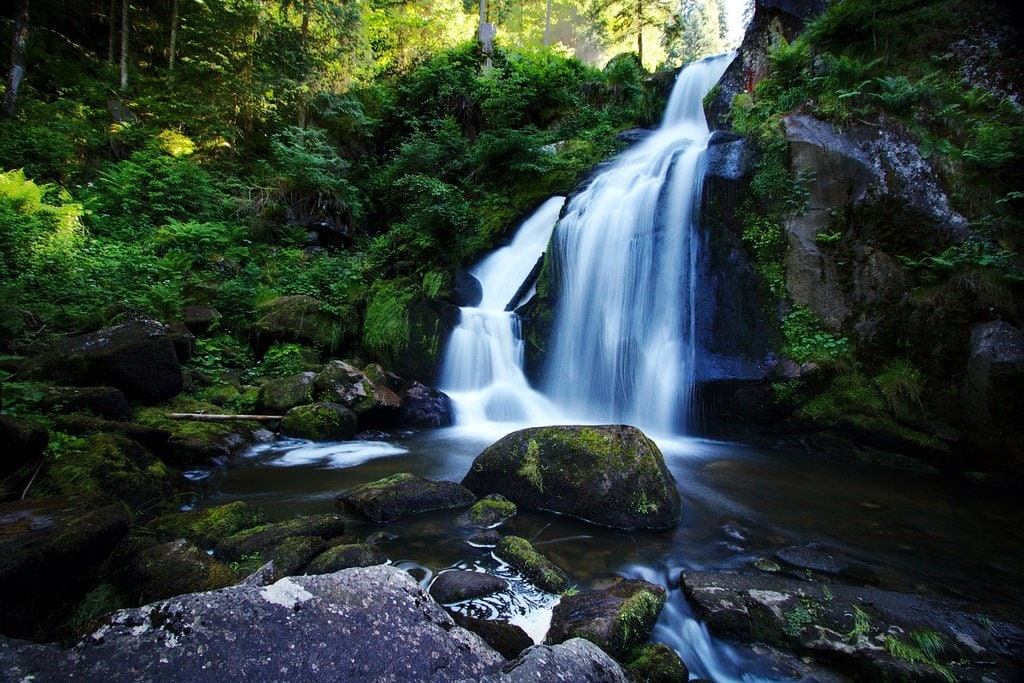 The water of the Gutach falls noisily and foaming down 163 metres over seven waterfall steps, providing a unique natural spectacle that can be experienced three different ways: on the nature path, the culture path and the cascade path. You can get right up close to the spray and the healing ionized air on the jetty with its deck. The romantics among us can enjoy the intimate atmosphere of the illuminated waterfalls until 10 p.m.
The water of the Gutach falls noisily and foaming down 163 metres over seven waterfall steps, providing a unique natural spectacle that can be experienced three different ways: on the nature path, the culture path and the cascade path. You can get right up close to the spray and the healing ionized air on the jetty with its deck. The romantics among us can enjoy the intimate atmosphere of the illuminated waterfalls until 10 p.m.
11. German Wine Route: invigorating tour through the Pfalz region
—————————————————————–
 The German Wine Route stretches from Bockenheim near Worms over almost 85 kilometres to the German Wine Gate in Schweigen-Rechtenbach on the border with Alsace. With over eighty years of barrels and bottles, it is the oldest and most famous tourist route on Bacchus’ trail in the world, taking you past countless castles and palaces, churches and monasteries, towns and villages and many more vineyards – all ready and waiting for you to visit.
The German Wine Route stretches from Bockenheim near Worms over almost 85 kilometres to the German Wine Gate in Schweigen-Rechtenbach on the border with Alsace. With over eighty years of barrels and bottles, it is the oldest and most famous tourist route on Bacchus’ trail in the world, taking you past countless castles and palaces, churches and monasteries, towns and villages and many more vineyards – all ready and waiting for you to visit.
12. Baroque splendour on 9.3 hectares: Würzburg Court Garden
————————————————————
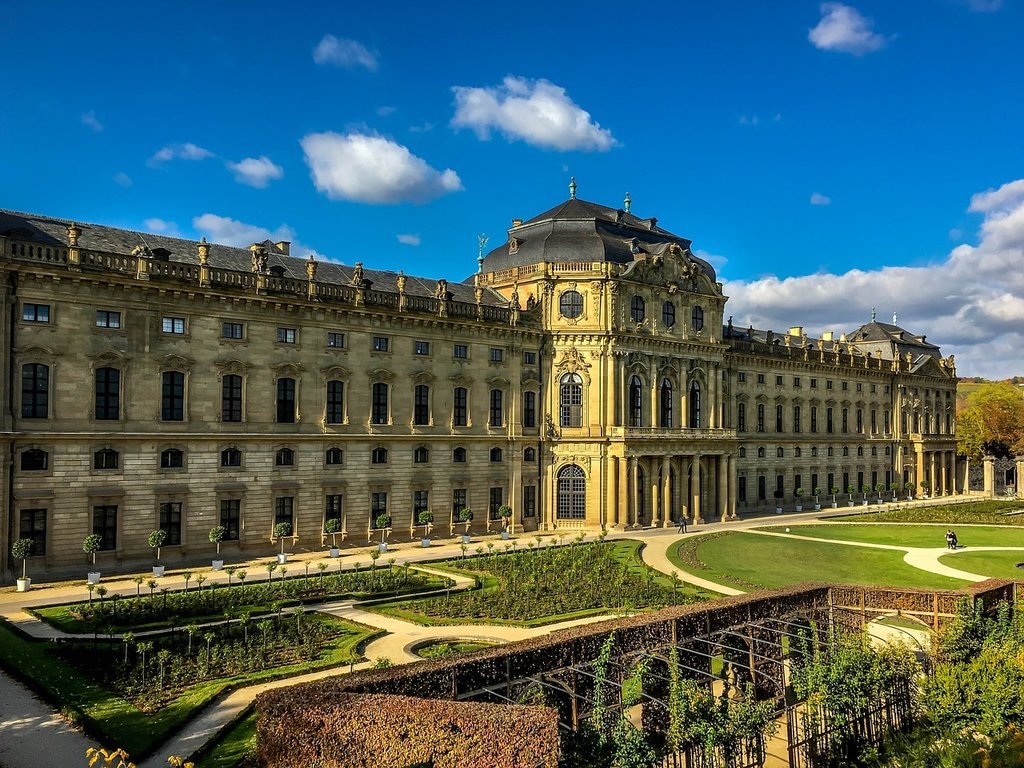 The clean symmetrical structure guides you from circular gardens to lush flowerbeds, potted plants, terraces, pergolas, orchards and pools. Where margravines, princes and archbishops once strolled, today normal visitors frequent the meadows and secluded corners in the spacious area of this UNESCO World Heritage Würzburg residence. The best Franconian wines, which Goethe had already raved about saying “None other tastes as good”, grow within sight of the garden. That’s probably how it will stay, because whenever and wherever possible, citizens of Würzburg stop for a glass and a chat – and soon you will be joining them.
The clean symmetrical structure guides you from circular gardens to lush flowerbeds, potted plants, terraces, pergolas, orchards and pools. Where margravines, princes and archbishops once strolled, today normal visitors frequent the meadows and secluded corners in the spacious area of this UNESCO World Heritage Würzburg residence. The best Franconian wines, which Goethe had already raved about saying “None other tastes as good”, grow within sight of the garden. That’s probably how it will stay, because whenever and wherever possible, citizens of Würzburg stop for a glass and a chat – and soon you will be joining them.
13. The Zugspitze: Germany’s highest mountain
———————————————
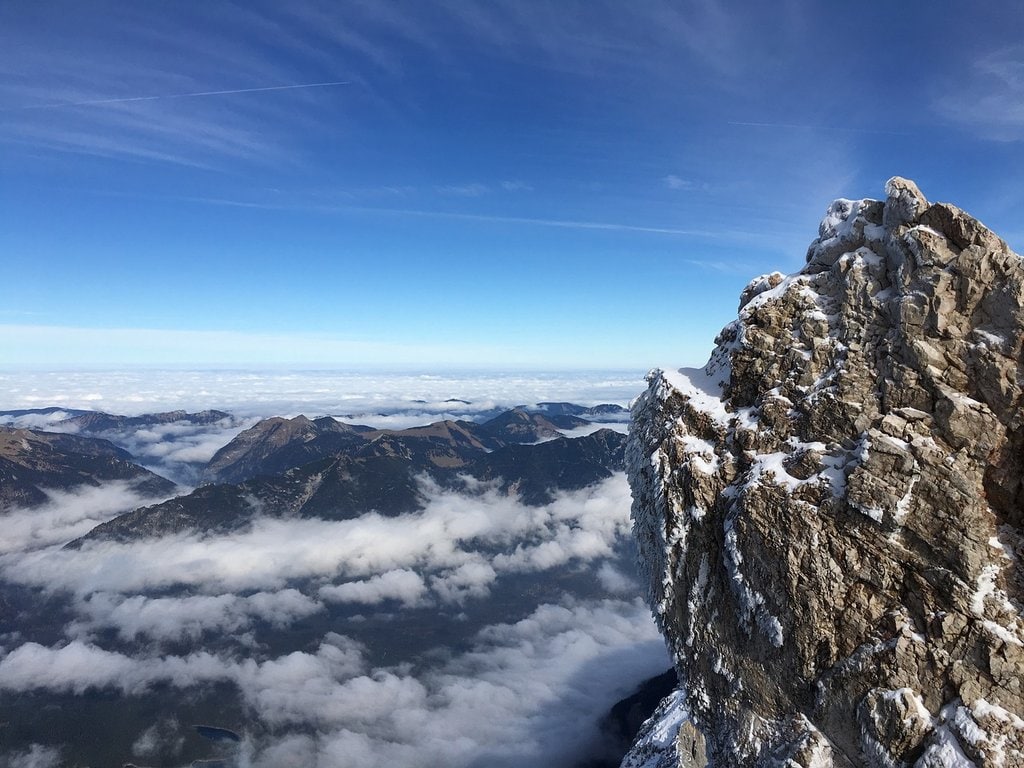 The mountain world around Garmisch-Partenkirchen boasts more high alpine experiences than any other region in Germany. The Zugspitze, standing 2,962 metres tall and easily towering over all the other local mountains, beckons from its lofty heights. Look round a full circle from there and you will take in no less than four hundred mountain peaks. If you have a head for heights, dare yourself to set foot on the AlpspiX viewing platform, which hangs almost a thousand metres above the abyss. Thudding heart guaranteed.
The mountain world around Garmisch-Partenkirchen boasts more high alpine experiences than any other region in Germany. The Zugspitze, standing 2,962 metres tall and easily towering over all the other local mountains, beckons from its lofty heights. Look round a full circle from there and you will take in no less than four hundred mountain peaks. If you have a head for heights, dare yourself to set foot on the AlpspiX viewing platform, which hangs almost a thousand metres above the abyss. Thudding heart guaranteed.
14. World-class entertainment: Europa Park in Rust
————————————————–
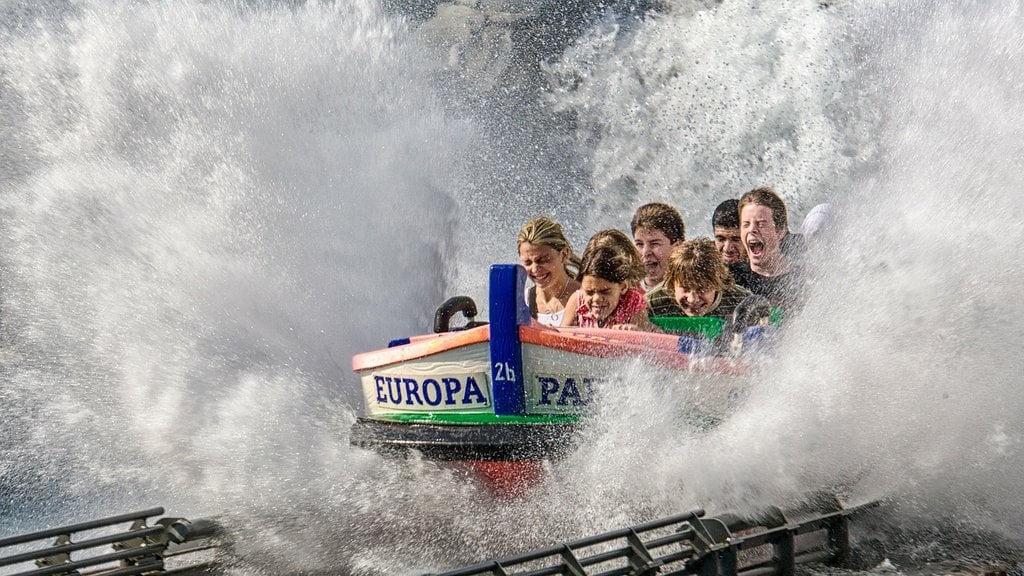 The Europa Park is regarded as the best amusement park in the world and is also the largest entertainment park with its daily 23-hour show programme. There are now fifteen European theme areas here in Germany’s largest amusement park. We’ll be amazed if you don’t scream with delight on the thirteen spectacular roller coasters. The “Alpenexpress Coastiality” virtual reality adventure takes you on a wild ride through East Frisia along with Baby Otti and other Ottifants. Enter the mystical world of a troll with fjord rafting and many special effects.
The Europa Park is regarded as the best amusement park in the world and is also the largest entertainment park with its daily 23-hour show programme. There are now fifteen European theme areas here in Germany’s largest amusement park. We’ll be amazed if you don’t scream with delight on the thirteen spectacular roller coasters. The “Alpenexpress Coastiality” virtual reality adventure takes you on a wild ride through East Frisia along with Baby Otti and other Ottifants. Enter the mystical world of a troll with fjord rafting and many special effects.
15. Munich for art lovers: the Pinakotheken
——————————————-
The Alte Pinakothek and the Pinakothek der Moderne (Old and Modern Pinakothek respectively) are among the world’s most renowned art collections. Since 1836, they have been exhibiting pictures and paintings from historical epochs in Munich’s Maxvorstadt district. Together with the Brandhorst Museum and several other Maxvorstadt museums, they form the Kunstareal museum quarter in Munich.
16. The Elbphilharmonie concert hall: a new landmark for the proud Hanseatic city of Hamburg
——————————————————————————————–
 Since January 2017, Hamburg has had a new cultural landmark, an architectural and acoustic pearl, as well as a crowd-puller. A huge complex of buildings of spectacular architecture standing on around 1,700 reinforced concrete pillars in the Elbe, with two concert halls, a hotel, 45 apartments and a freely accessible plaza was erected in HafenCity, 37 metres above sea level, inviting you to enjoy a panoramic view over the city.
Since January 2017, Hamburg has had a new cultural landmark, an architectural and acoustic pearl, as well as a crowd-puller. A huge complex of buildings of spectacular architecture standing on around 1,700 reinforced concrete pillars in the Elbe, with two concert halls, a hotel, 45 apartments and a freely accessible plaza was erected in HafenCity, 37 metres above sea level, inviting you to enjoy a panoramic view over the city.
17. A peak experience: Balderschwang is Germany’s smallest and highest situated community
—————————————————————————————–
 This Allgäu village nestles at an altitude of 1,044 metres in the border triangle of Germany, Austria and Switzerland. Until the 1960s, the only road from the handful of houses led to Austria. Since Germany’s highest pass road, the Riedbergpass, was built, the community has been connected to Fischen railway station. There are hiking or cross-country trails from almost every holiday rental and hotel. They lead to eleven ski lifts, thirty kilometres of pistes and criss-cross the Nagelfluh Nature Park. The resort was awarded the title of best German and second-placed European ski resort a few years ago for its unique combination of infrastructure, nature, snow safety and air quality.
This Allgäu village nestles at an altitude of 1,044 metres in the border triangle of Germany, Austria and Switzerland. Until the 1960s, the only road from the handful of houses led to Austria. Since Germany’s highest pass road, the Riedbergpass, was built, the community has been connected to Fischen railway station. There are hiking or cross-country trails from almost every holiday rental and hotel. They lead to eleven ski lifts, thirty kilometres of pistes and criss-cross the Nagelfluh Nature Park. The resort was awarded the title of best German and second-placed European ski resort a few years ago for its unique combination of infrastructure, nature, snow safety and air quality.
18. World Heritage Site and dream holiday destination: the Wadden Sea mud flats
——————————————————————————-
 The Wadden Sea in the North Sea is a fascinating landscape, made for hiking and observing its many animal species. Every year, ten to twelve million migratory birds use the Wadden Sea as a breeding ground and resting place. Over ten thousand different plant and animal species live on the land, in the water and in the salt marshes. The ebb and flow of the tides change this extraordinary natural landscape almost daily. The dreamlike islands in the middle of it all are captivating with their white beaches, dunes and unique tranquillity. Except when the sea retreats: then you hear the Wadden Sea, its air bubbles rising and the lugworms retreating. It crackles. The little piles that you will see are not the lugworms themselves, but only their castings.
The Wadden Sea in the North Sea is a fascinating landscape, made for hiking and observing its many animal species. Every year, ten to twelve million migratory birds use the Wadden Sea as a breeding ground and resting place. Over ten thousand different plant and animal species live on the land, in the water and in the salt marshes. The ebb and flow of the tides change this extraordinary natural landscape almost daily. The dreamlike islands in the middle of it all are captivating with their white beaches, dunes and unique tranquillity. Except when the sea retreats: then you hear the Wadden Sea, its air bubbles rising and the lugworms retreating. It crackles. The little piles that you will see are not the lugworms themselves, but only their castings.
19. In Berlin’s centre: up on high in the television tower
———————————————————-
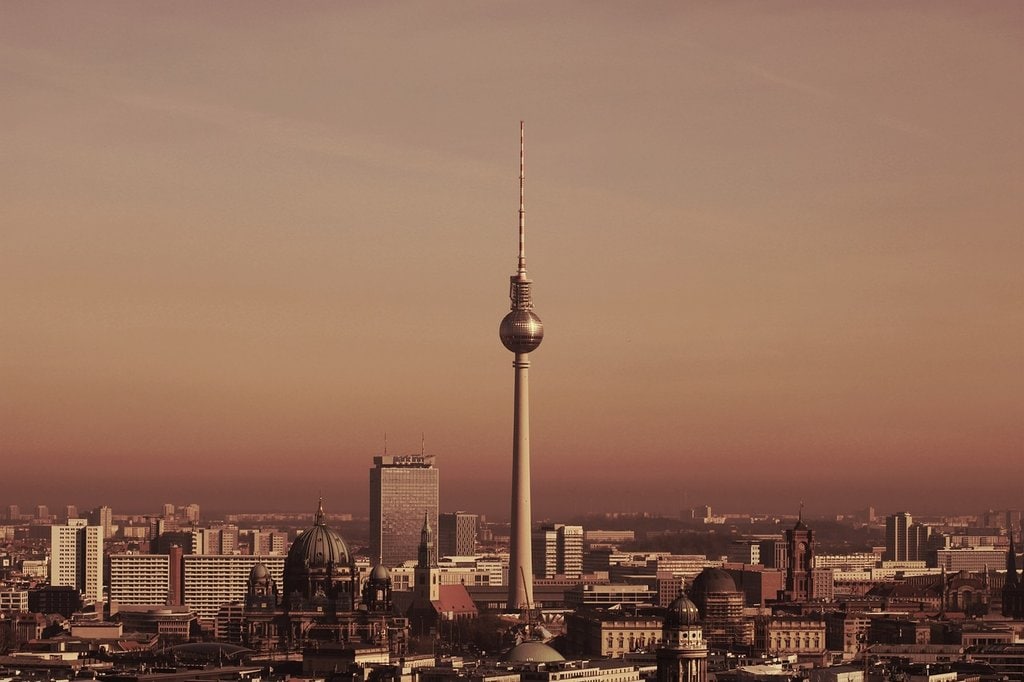 Some mock it as the “telly asparagus”, some the “show-off’s drumstick”. This does not make it any less popular among Berliners and its visitors alike. After all, where else could you get such a view? The television tower is right in the centre of Berlin, directly on Alexanderplatz, and standing 368 metres high, it is the tallest structure in Germany. The view from the viewing platform extends far over the city to the Brandenburg countryside. One floor up from there, the café makes one complete rotation every hour – a panoramic view in every sense.
Some mock it as the “telly asparagus”, some the “show-off’s drumstick”. This does not make it any less popular among Berliners and its visitors alike. After all, where else could you get such a view? The television tower is right in the centre of Berlin, directly on Alexanderplatz, and standing 368 metres high, it is the tallest structure in Germany. The view from the viewing platform extends far over the city to the Brandenburg countryside. One floor up from there, the café makes one complete rotation every hour – a panoramic view in every sense.
20. Speyer Cathedral: the largest building in the Christian world
—————————————————————–
 When Konrad the Second was crowned Emperor, he decided to have a cathedral of unprecedented proportions built on the banks of the Rhine. This was only consecrated during his grandson’s reign, who later also undertook several conversions. This impressive monument of Romanesque architecture became the template for many church buildings from the early Middle Ages and is the largest surviving Romanesque church. It has been one of the World Heritage Sites since 1981.
When Konrad the Second was crowned Emperor, he decided to have a cathedral of unprecedented proportions built on the banks of the Rhine. This was only consecrated during his grandson’s reign, who later also undertook several conversions. This impressive monument of Romanesque architecture became the template for many church buildings from the early Middle Ages and is the largest surviving Romanesque church. It has been one of the World Heritage Sites since 1981.
21. Romantic landscape park with a little castle: Pfaueninsel near Potsdam
————————————————————————–
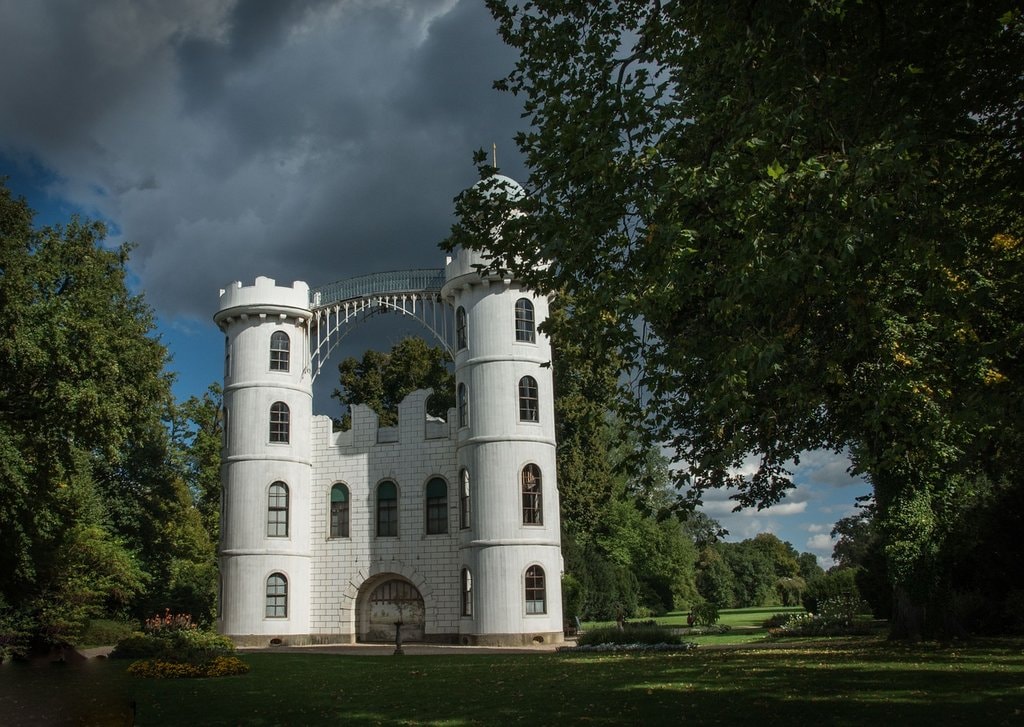 “A castle, palm trees and kangaroos; parrots screeching; peacocks sitting on high poles or fanning out their feathers; aviaries, fountains, overshadowed meadows, winding paths that lead everywhere and nowhere; a mysterious island, an oasis, a carpet of flowers in the middle of the countryside”. There is nothing better to describe the Pfaueninsel (Peacock Island) than the words of the poet Theodor Fontane. Its address puts it in the district of Berlin-Zehlendorf, but it is part of neighbouring Potsdam’s cultural landscape. The “Luise” ferry takes you over from the mainland. Just give it a wave.
“A castle, palm trees and kangaroos; parrots screeching; peacocks sitting on high poles or fanning out their feathers; aviaries, fountains, overshadowed meadows, winding paths that lead everywhere and nowhere; a mysterious island, an oasis, a carpet of flowers in the middle of the countryside”. There is nothing better to describe the Pfaueninsel (Peacock Island) than the words of the poet Theodor Fontane. Its address puts it in the district of Berlin-Zehlendorf, but it is part of neighbouring Potsdam’s cultural landscape. The “Luise” ferry takes you over from the mainland. Just give it a wave.
22. Munich way of life: English Garden
————————————–
 As soon as the weather allows, half of Munich and at least as many tourists meet up in the English Garden. It is one of the world’s largest inner-city parks and guarantees recreation just as it should be. The panoramic view from the temple-like Monopteros gives you an overview of the park. It takes quite some stamina to tackle the surfer wave, but the rushing sound of the nearby waterfalls is immensely calming. The northern part of the Schwammerlweiher lake with its small island is particularly romantic. You can stop for a bite to eat in the Chinese Tower with its beer garden.
As soon as the weather allows, half of Munich and at least as many tourists meet up in the English Garden. It is one of the world’s largest inner-city parks and guarantees recreation just as it should be. The panoramic view from the temple-like Monopteros gives you an overview of the park. It takes quite some stamina to tackle the surfer wave, but the rushing sound of the nearby waterfalls is immensely calming. The northern part of the Schwammerlweiher lake with its small island is particularly romantic. You can stop for a bite to eat in the Chinese Tower with its beer garden.
23. Albert Einstein’s paradise near Potsdam: Caputh
—————————————————
 Image source: Roland707 via Flickr
Image source: Roland707 via Flickr
Einstein and his wife enjoyed much of each year between 1929 and 1932 in this wooden house on Lake Templin until they did not return following a lecture tour through the USA after the Nazis took power. You can visit the house from April to October and enjoy the idyll so loved by Einstein. The same applies to the Einstein Tower on the Telegraphenberg (telegraph hill) with its large-scale astrophysical facility used to generate empirical proof of the general theory of relativity.
24. Blockbuster action in the film city of Potsdam-Babelsberg: a trip into the history of film
———————————————————————————————-
 Legendary stars have established or consolidated their fame in the Babelsberg studios and made international cinema history in this film city near Potsdam. It is still as alive today, well over a hundred years after it was founded, as it was on its inaugural day. You don’t have to be an international film personality to be an enthusiastic visitor here. You too can feel that special flair, be inspired by the scenery and exhibitions, stroll through the villa district of past Ufa (Universal Film) stars or enjoy the stunt show and the “4D cinema”.
Legendary stars have established or consolidated their fame in the Babelsberg studios and made international cinema history in this film city near Potsdam. It is still as alive today, well over a hundred years after it was founded, as it was on its inaugural day. You don’t have to be an international film personality to be an enthusiastic visitor here. You too can feel that special flair, be inspired by the scenery and exhibitions, stroll through the villa district of past Ufa (Universal Film) stars or enjoy the stunt show and the “4D cinema”.
25. Aschaffenburg: an oasis of nature and cabaret
————————————————-
 Aschaffenburg boasts eight historic parks and gardens and, above all, the Schönbusch Landscape Park is an integrated work of art inspired by the well-thought-out dramaturgy of famous English gardens. Trees up to a hundred years old celebrate an explosive flower festival in spring in the Schöntal Park with its wildly romantic ruins covering 2,500 square metres, doing full justice to the name “Magnolia Grove” in “Bavaria’s Nice”. The Hofgarten, on the other hand, provides great cabaret entertainment day after day.
Aschaffenburg boasts eight historic parks and gardens and, above all, the Schönbusch Landscape Park is an integrated work of art inspired by the well-thought-out dramaturgy of famous English gardens. Trees up to a hundred years old celebrate an explosive flower festival in spring in the Schöntal Park with its wildly romantic ruins covering 2,500 square metres, doing full justice to the name “Magnolia Grove” in “Bavaria’s Nice”. The Hofgarten, on the other hand, provides great cabaret entertainment day after day.
26. MitMachPark in Storkow (Mark): a labyrinth of fun
—————————————————–
“IRRLANDIA” is a winding interactive park with fun-filled labyrinths and one of the most popular family destinations for the residents of Berlin and Brandenburg. Every year it entices visitors to literally have fun finding their way again during the warmer months. The cornfield maze with its many hiding places and chances to win prizes, as well as the knight and robber festival and, for the most daring (is that you?), Brandenburg’s highest slide paradise are among the highlights.
27. Bremens Schnoorviertel: pearls on a string
———————————————-
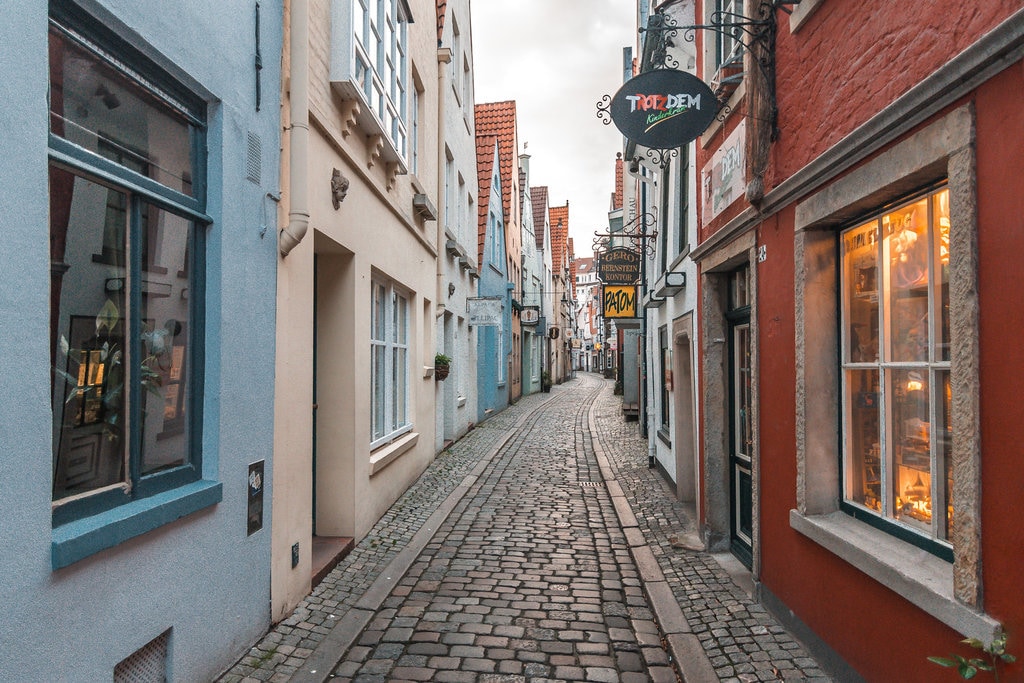 Image sources: Alexander Waltner via Flickr
Image sources: Alexander Waltner via Flickr
The Schnoor (Low German for “string”) is Bremen’s oldest quarter. Small, narrow half-timbered houses from the 15th and 16th centuries line up along the narrow alleys like pearls on a string. A wealth of small shops with goldsmiths’, handicrafts and maritime souvenirs, as well as cafés and galleries, liven up this already atmospheric quarter close to the Weser river. You can even shop on Sundays between 11 a.m. and 4 p.m. from April to December.
28. Stylish throughout the ages: half-timbered houses in Quedlinburg
——————————————————————–
 A walk through Quedlinburg is like a complete study of all epochs of half-timbered architecture. The oldest house, also one of the oldest in Germany, was built around 1350 as a post-and-beam construction. In addition to the Late Gothic style that followed and the Renaissance style, the Quedlinburg special style emerged after the Thirty Years’ War, recognisable by the diamond cut of the beam heads. It almost goes without saying that this integrated work of art has been recognised as a UNESCO World Heritage Site.
A walk through Quedlinburg is like a complete study of all epochs of half-timbered architecture. The oldest house, also one of the oldest in Germany, was built around 1350 as a post-and-beam construction. In addition to the Late Gothic style that followed and the Renaissance style, the Quedlinburg special style emerged after the Thirty Years’ War, recognisable by the diamond cut of the beam heads. It almost goes without saying that this integrated work of art has been recognised as a UNESCO World Heritage Site.
29. Awaken the wanderlust: the landing stages in Hamburg
——————————————————–
 The St.-Pauli-Landungsbrücken were once a landing stage for long-distance liners, but today most of the vessels that stop at the northern edge of Hamburg harbour are passenger boats. Transferring visitors to “The Lion King” musical or “The Miracle of Bern” to the other bank of the Elbe for example, or taking tourists on a harbour tour or a trip to Heligoland. The landing stages are very close to the famous fish market and great to walk along. And if you don’t try any of the delicious fish rolls, you’re missing out!
The St.-Pauli-Landungsbrücken were once a landing stage for long-distance liners, but today most of the vessels that stop at the northern edge of Hamburg harbour are passenger boats. Transferring visitors to “The Lion King” musical or “The Miracle of Bern” to the other bank of the Elbe for example, or taking tourists on a harbour tour or a trip to Heligoland. The landing stages are very close to the famous fish market and great to walk along. And if you don’t try any of the delicious fish rolls, you’re missing out!
30. Cast in bronze: the world-famous Town Musicians of Bremen
————————————————————-
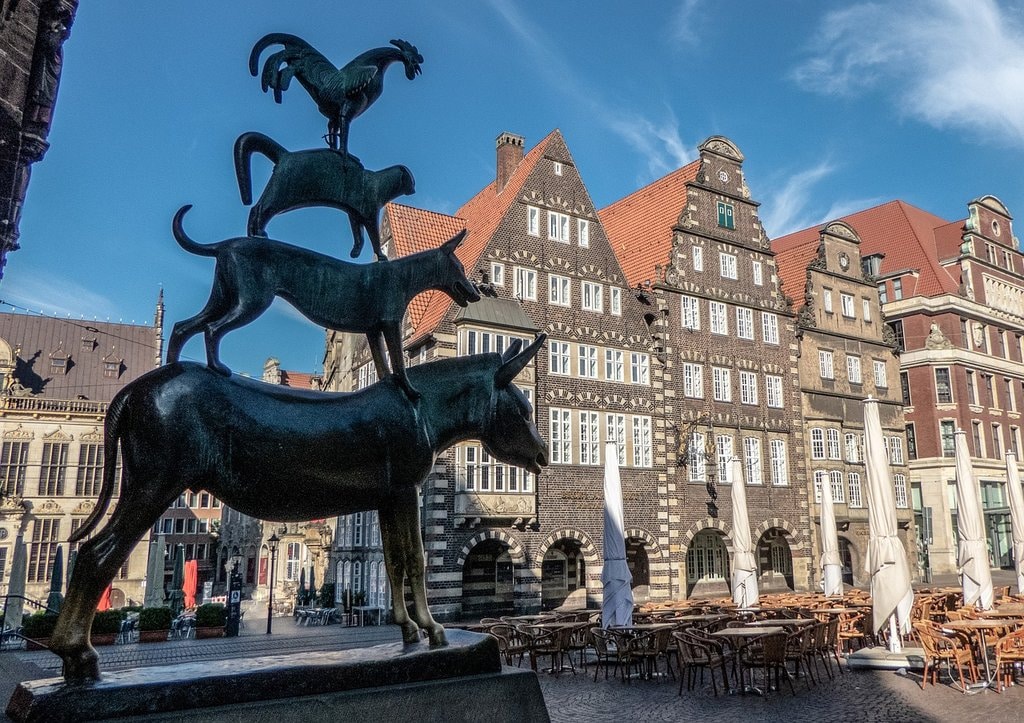 Sometimes the Bremen Town Hall, a historical highlight of the Hanseatic city and a member of the UNESCO World Cultural Heritage, is overshadowed by a few runaway animals: the Town Musicians of Bremen, known to all children. These fellows prove in the delightful fairy tale of the same name that the weak can prevail against the strong… if they work together. And because the donkey, dog, cat and rooster were such good role models, many monuments were made in their honour. One of the world’s most beautiful can be admired on the west side of the town hall. Gerhard Marcks created it in 1951.
Sometimes the Bremen Town Hall, a historical highlight of the Hanseatic city and a member of the UNESCO World Cultural Heritage, is overshadowed by a few runaway animals: the Town Musicians of Bremen, known to all children. These fellows prove in the delightful fairy tale of the same name that the weak can prevail against the strong… if they work together. And because the donkey, dog, cat and rooster were such good role models, many monuments were made in their honour. One of the world’s most beautiful can be admired on the west side of the town hall. Gerhard Marcks created it in 1951.
31. Vegesack: the nautical mile on land
—————————————
Vegesack, 20 kilometres from Bremen’s city centre and accessible by ship, keeps its seafaring and shipbuilding history alive. Along the Weser, the “Maritime Mile” and its historical sites stretches exactly the length of a nautical mile, namely 1,852 metres. The three-hundred-year-old Havenhaus offers you maritime delicacies along with other restaurants on the Utkiek; after all, it’s all about “culture & enjoyment on the river”. In the Museumshaven museum harbour, lovingly restored traditional ships lie in front of historic warehouses and provide the ideal backdrop for the Maritim Festival, the Vegesack Harbour Festival and the Loggermarkt.
32. Hamburg’s Speicherstadt: great amazement at tiny works of art
—————————————————————–
 One of the favourite attractions of German travellers is “Miniatur Wunderland”, the largest model railway in the world in Hamburg’s Speicherstadt warehouse district. It takes you on a journey through countries and continents with faithfully recreated landscapes. The journeys take you through Austria, Central Germany, Hamburg, America, Scandinavia, Switzerland and Italy.
One of the favourite attractions of German travellers is “Miniatur Wunderland”, the largest model railway in the world in Hamburg’s Speicherstadt warehouse district. It takes you on a journey through countries and continents with faithfully recreated landscapes. The journeys take you through Austria, Central Germany, Hamburg, America, Scandinavia, Switzerland and Italy.
33. Frankfurt am Main: culture and tradition meet business
———————————————————-
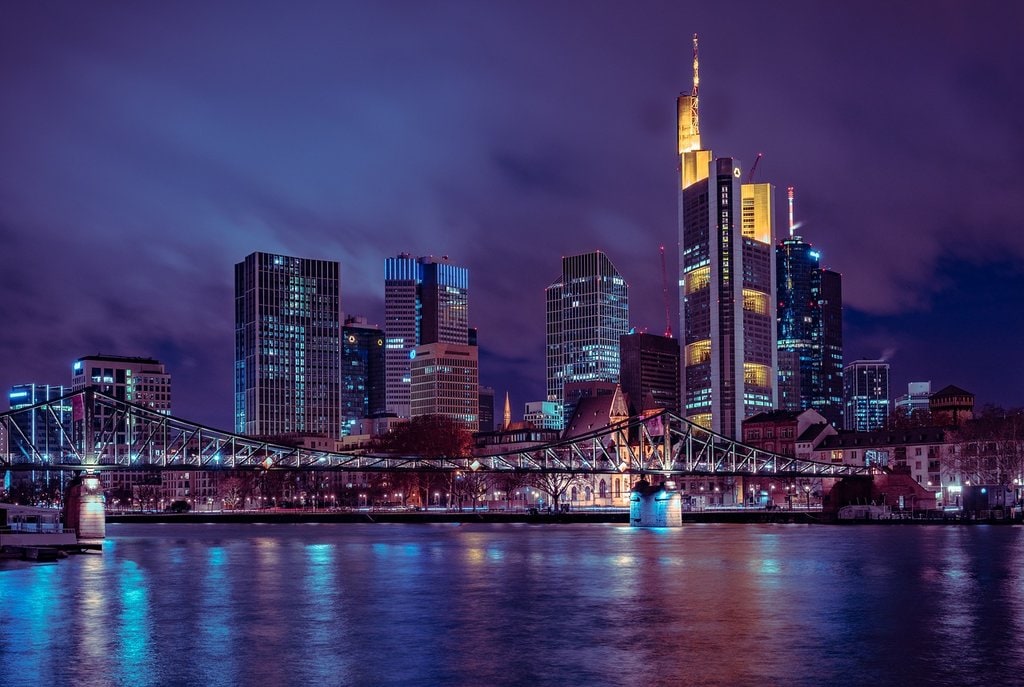 In the shadow of the world-famous bank towers, impressive testimonials from history, quiet corners and cosiness rub shoulders with one another. The town hall, a former patrician house now called the Römer, captivates with its staircase gable façade while Johann Wolfgang Goethe’s parents’ house is one of the most important and most popular poet memorials in Germany. It is only a stone’s throw from there to the poet’s reputed favourite dish, the famous Frankfurt Green Sauce. It definitely tastes best with a good sip of the national drink Ebbelwei – apple wine.
In the shadow of the world-famous bank towers, impressive testimonials from history, quiet corners and cosiness rub shoulders with one another. The town hall, a former patrician house now called the Römer, captivates with its staircase gable façade while Johann Wolfgang Goethe’s parents’ house is one of the most important and most popular poet memorials in Germany. It is only a stone’s throw from there to the poet’s reputed favourite dish, the famous Frankfurt Green Sauce. It definitely tastes best with a good sip of the national drink Ebbelwei – apple wine.
34. Kassel: the documenta success story
—————————————
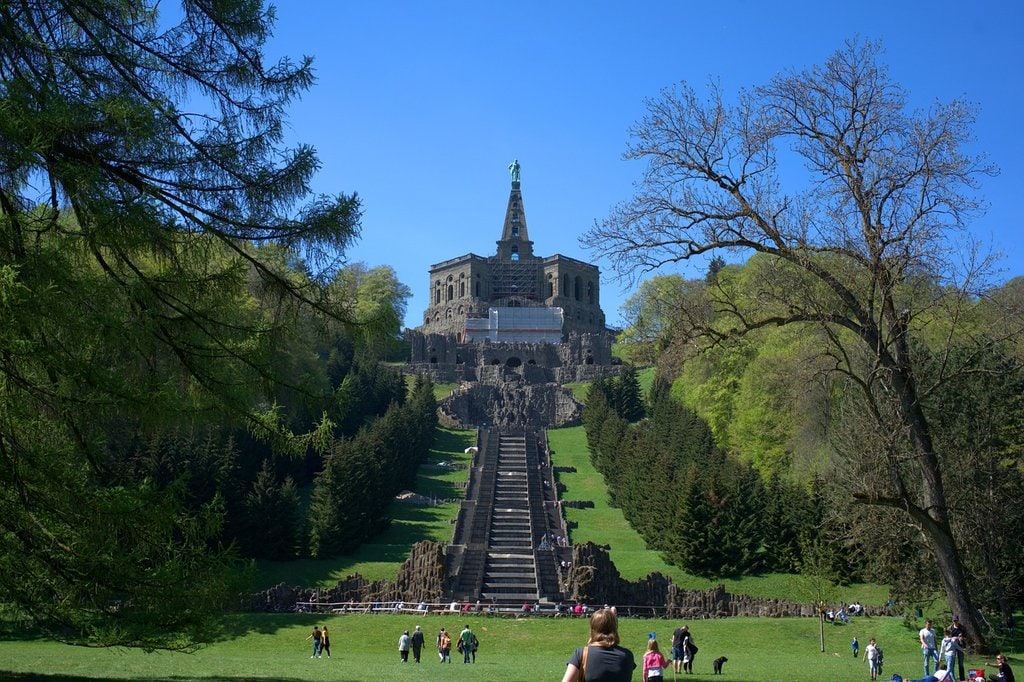 The documenta in Kassel is the epitome of contemporary art. In 1955, it first showed developments in art since the early 20th century in the ruins of the destroyed Museum Fridericianum, accompanying the Federal Horticultural Show. Every five years since then, it has brought together current trends in contemporary art and experimented with new exhibition concepts, which have often led to socio-political discussions. Each exhibition has left visible artistic marks in Kassel, so that even in the years between documentas, important works of art can be discovered on various tours.
The documenta in Kassel is the epitome of contemporary art. In 1955, it first showed developments in art since the early 20th century in the ruins of the destroyed Museum Fridericianum, accompanying the Federal Horticultural Show. Every five years since then, it has brought together current trends in contemporary art and experimented with new exhibition concepts, which have often led to socio-political discussions. Each exhibition has left visible artistic marks in Kassel, so that even in the years between documentas, important works of art can be discovered on various tours.
35. Boat trip from Rüdesheim: medieval buildings in the romantic Middle Rhine Valley
————————————————————————————
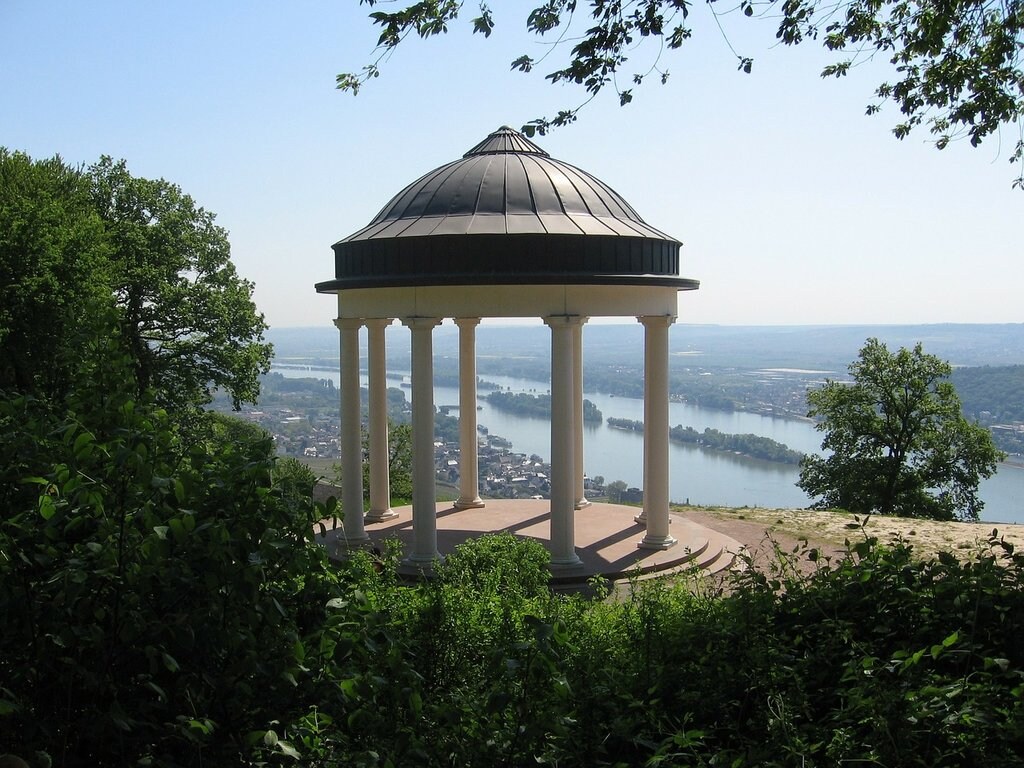 A steamboat tour through the Middle Rhine Valley takes you along Europe’s oldest trade route with former customs castles and robber barons’ lairs. Above all, however, the sheer density of medieval castles, not to be found anywhere else in the world, takes your breath away on this section of the Rhine. Rheinstein Castle, the Reichenstein Castle near Trechtingshausen, the Ehrenfels Castle ruin, the legendary Mouse Tower outside Bingen am Rhein, Klopp Castle near Bingen and Brömserburg Castle impressed Victor Hugo, Goethe and Heinrich Heine and inspired them to immortal poetry.
A steamboat tour through the Middle Rhine Valley takes you along Europe’s oldest trade route with former customs castles and robber barons’ lairs. Above all, however, the sheer density of medieval castles, not to be found anywhere else in the world, takes your breath away on this section of the Rhine. Rheinstein Castle, the Reichenstein Castle near Trechtingshausen, the Ehrenfels Castle ruin, the legendary Mouse Tower outside Bingen am Rhein, Klopp Castle near Bingen and Brömserburg Castle impressed Victor Hugo, Goethe and Heinrich Heine and inspired them to immortal poetry.
36. For Vicco von Bülow: the man with the big nose and the Loriot sofa
———————————————————————-
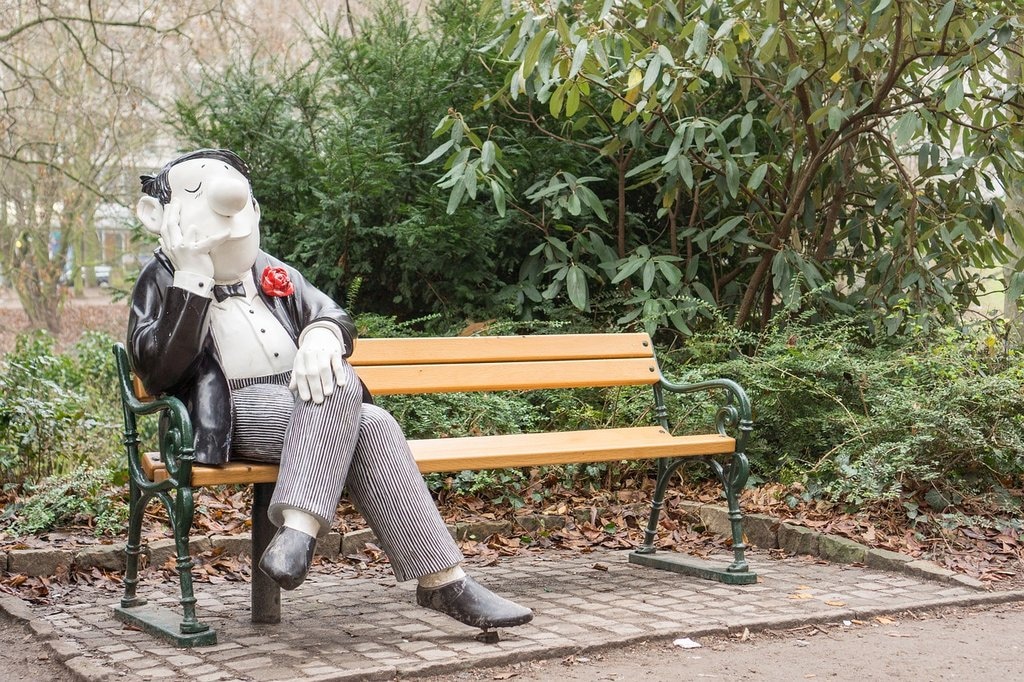 The famous cartoonist Loriot belonged to Bremen like his pug on the sofa. For decades, the humourist Vicco von Bülow, known as Loriot, entertained his television audience from the Bremen studio in a most subtle way. Loriotplatz square is the city’s thank-you, where a two-hundred kilo bulbous-nosed man (one of Loriot’s most recognizable cartoon characters) in his typical pose sits on a park bench. Even heavier at 600 kilograms is Loriot’s famous green Biedermeier sofa in front of the Radio Bremen broadcasting centre, on which – of course – a pug is enthroned.
The famous cartoonist Loriot belonged to Bremen like his pug on the sofa. For decades, the humourist Vicco von Bülow, known as Loriot, entertained his television audience from the Bremen studio in a most subtle way. Loriotplatz square is the city’s thank-you, where a two-hundred kilo bulbous-nosed man (one of Loriot’s most recognizable cartoon characters) in his typical pose sits on a park bench. Even heavier at 600 kilograms is Loriot’s famous green Biedermeier sofa in front of the Radio Bremen broadcasting centre, on which – of course – a pug is enthroned.
37. The Struwwelpeter Museum in Frankfurt: feel disgusted and join in
———————————————————————
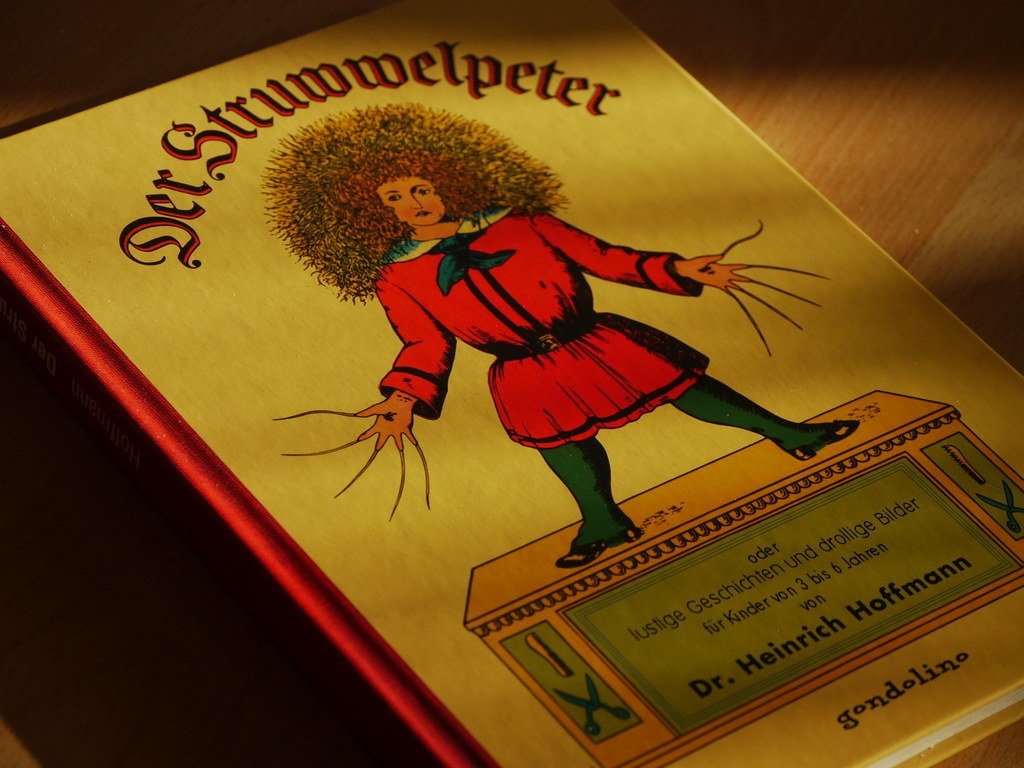 Image sources: Infinite Ache via Flickr
Image sources: Infinite Ache via Flickr
“Just look at him! there he stands, with his hasty hair and hands.” Although described as repulsive, Struwwelpeter (“Shock-headed Peter” or “Shaggy Peter” in English),was so popular that a beautiful museum has been dedicated to him, in which children and adults can dress up in the Struwwel studio and have great fun showing off their not-so-well-behaved side. Four floors of this Westend villa in Frankfurt am Main breath joyful life into the world-famous “Struwwelpeter” and his spiritual father Dr. Heinrich Hoffmann with portraits, letters, first editions of interactive stations and theatre.
38. Above the clouds: the Willingen cable car
———————————————
One of the most modern cable cars in Germany swings you up to the 838-metre-high Ettelsberg with its unique view over Willingen. On Wednesdays, a technical tour gives you a look behind the scenes. During the Willinger Schlendertage (festival days), the Ettelsberg cable car even invites you to enjoy a 5-course meal at lofty heights.
39. Journey through 70 million years of history: Königsstuhl National Park
————————————————————————–
 At the northern tip of Rügen, the Jasmund National Park extends around the island’s landmark, the Königsstuhl. With its three thousand hectares it is small, but very beautiful. The National Park Centre welcomes you on an impressive journey through time, beginning with a dive into the Ice Age. Guests experience the different ages under water and on the beach, in moors, on meadows and in the forest. You will experience up close how the chalk was created and how boulders weighing tonnes, pulverized by the ice, landed as sand and gravel in the Baltic Sea.
At the northern tip of Rügen, the Jasmund National Park extends around the island’s landmark, the Königsstuhl. With its three thousand hectares it is small, but very beautiful. The National Park Centre welcomes you on an impressive journey through time, beginning with a dive into the Ice Age. Guests experience the different ages under water and on the beach, in moors, on meadows and in the forest. You will experience up close how the chalk was created and how boulders weighing tonnes, pulverized by the ice, landed as sand and gravel in the Baltic Sea.
40. Heiligendamm, the white city by the sea: the oldest German seaside resort
——————————–
More Articles With City break
Finding wheelchair-accessible things to do in London can often be a tricky task, but a new app makes it a lot easier.
Ready for your next great holiday? To help you prepare, we’ve created a simple travel checklist to make sure you’ve covered the essentials.
We rounded up 18 locals-only secrets in some of the world’s most beloved cities to help you feel like an insider, no matter where your travels take you.
Top travel tips from Jake Graf: a couples guide to London
The ultimate whatever-the-weather London staycation guide